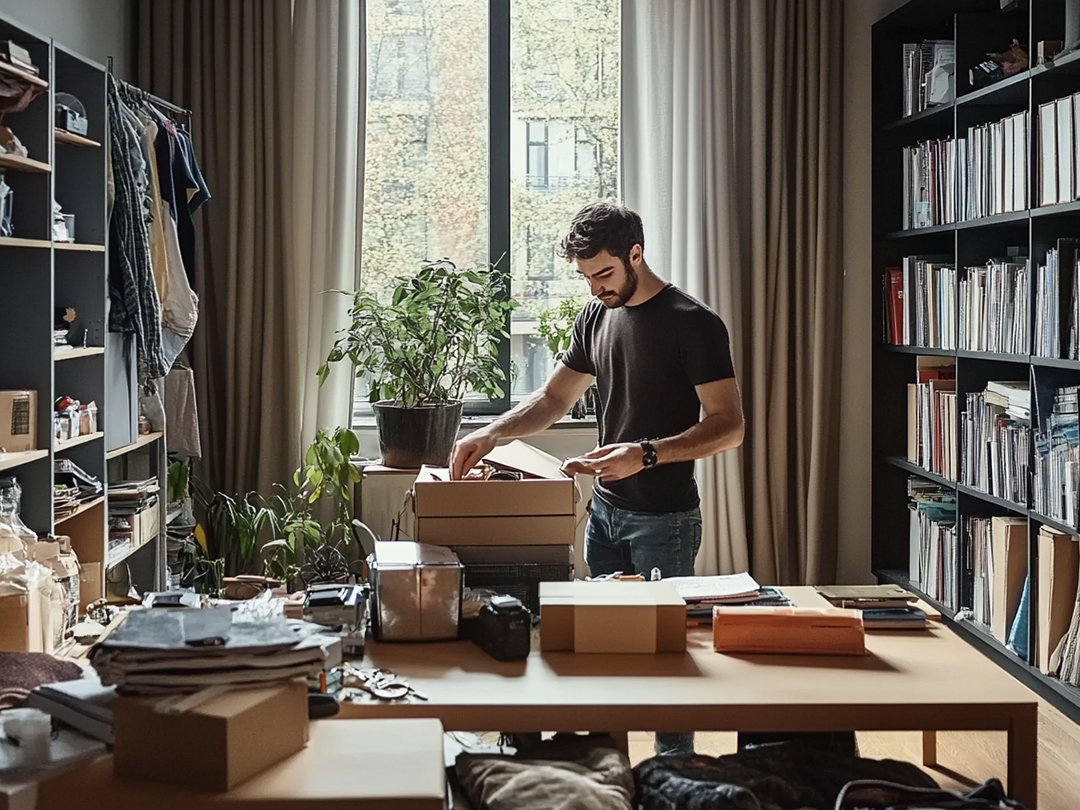Life gets busy. I used to feel like clutter was taking over—whether it was my desk, my closet, or even the apps on my phone. Over time, I realized it wasn’t just about the mess; it was about the stress and distraction it brought with it. So, I made a commitment to declutter, and honestly, it’s been life-changing. Simplifying my surroundings has helped me feel more in control, and I want to share how you can do the same.
Why Decluttering Matters to Me
Clutter isn’t just stuff lying around—it’s noise in my life. It used to distract me from the things that truly mattered. When I decided to declutter, I wasn’t just clearing out junk; I was making space for what I cared about most—my family, my hobbies, and my work. Decluttering gave me back my focus and a sense of calm. I realized that when my surroundings are in order, my mind follows.
What I Gained from Decluttering
I didn’t expect decluttering to impact me so much, but it really did. Here’s what I noticed:
- Better Focus: A clear space makes it so much easier to concentrate on what I’m doing.
- Less Stress: Without piles of stuff everywhere, I feel calmer and more in control.
- More Free Time: I stopped wasting time searching for things I thought I lost.
- Increased Productivity: A clean workspace gave me the mental clarity I needed to tackle my to-do list.
How I Got Started
The hardest part was figuring out where to begin. But once I took a step back and assessed what needed attention, it all became manageable. Here’s what worked for me:
Step 1: Take a Look Around
I started by looking at my space and deciding what needed the most attention. For me, it was my desk and closet—they were chaos. I made a list of areas to tackle, from my garage to my digital files, and focused on one thing at a time.
I’d ask myself these questions for each item:
- Have I used this in the past year?
- Does it actually serve a purpose?
- Would I miss it if it were gone?
Step 2: Start Small
Instead of trying to do everything at once (which is overwhelming), I picked one small area to work on—a drawer, a shelf, or a corner of my closet. Seeing progress in one spot motivated me to keep going.
A trick I loved was the 10-minute rule: I’d set a timer for 10 minutes and declutter as much as I could. It’s surprising how much I got done in that short time.
Step 3: Sorting Things Out
I divided everything into three categories:
- Keep: Things I actually used or needed.
- Donate or Sell: Good-condition items I didn’t use anymore. It felt great knowing someone else could benefit from them.
- Trash: Broken, expired, or useless items.
For the “maybe” items, I put them in a box and revisited them a month later. More often than not, I realized I didn’t need them.
Step 4: Get Organized
Once I sorted things, I focused on organizing what was left. Everything got a “home” so I wouldn’t have to scramble to find it again.
Some tips that helped me:
- I used bins and containers to keep similar items together.
- Labels were a lifesaver for storage boxes—I can find things in seconds now.
- Grouping items, like tools or gadgets, made everything feel more streamlined.
Step 5: Don’t Forget the Digital Clutter
My phone and laptop were just as messy as my desk. Cleaning up my digital space gave me a sense of relief I didn’t expect.
Here’s what I did:
- Inbox Cleanup: I unsubscribed from spam emails and deleted old messages.
- Organized Files: I sorted everything into folders and deleted duplicates.
- App Audit: I deleted apps I hadn’t opened in months.
- Backup Data: I moved important files to cloud storage so I wouldn’t lose them.
Step 6: Make It a Habit
Decluttering isn’t a one-time thing—it’s something I’ve learned to do regularly. Every evening, I take five minutes to tidy up my space. Once a month, I spend a little extra time doing a deeper clean.
One habit that changed everything for me? The “one in, one out” rule. For every new item I bring in, I let go of something old. It keeps everything balanced.
Step 7: Be Mindful About New Stuff
I realized a big part of decluttering is avoiding clutter in the first place. Now, before I buy something, I ask myself:
- Do I really need this?
- Do I have a place for it?
- Will it actually add value to my life?
It’s amazing how much I save just by being intentional with purchases.
Areas I Focused On
If you’re looking for places to start, here’s where I began:
- Closet: I donated clothes I hadn’t worn in a year.
- Garage: I sorted through old tools and sports gear.
- Desk: Papers, pens, and supplies finally got organized.
- Kitchen: I tossed expired food and extra gadgets I never used.
- Car: Cleaning the glove compartment felt like a small win.
The Psychological Benefits of Decluttering
For me, decluttering wasn’t just about making my space look better—it was about how it made me feel. A clean, organized environment helped me feel less anxious and more accomplished. It even improved my sleep. There’s something so calming about coming home to a space that feels put together.
Final Thoughts
Decluttering has been one of the best things I’ve done for myself. It’s not about having a picture-perfect home; it’s about creating a space that works for you. Start small, take your time, and focus on what really matters. Trust me, once you simplify your surroundings, you’ll feel lighter, clearer, and more in control. Give it a shot—you’ll be surprised how much it changes your perspective.













